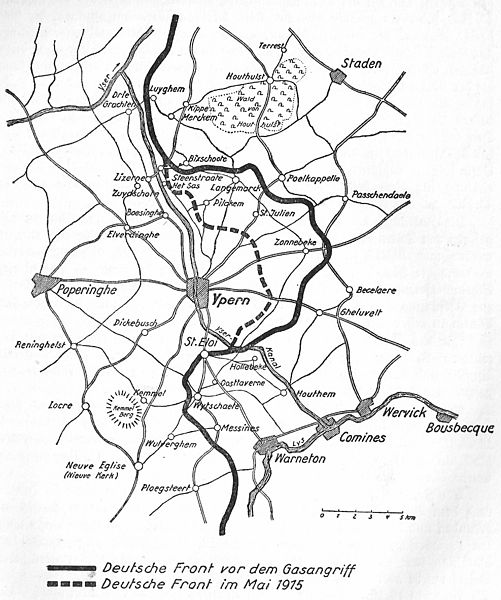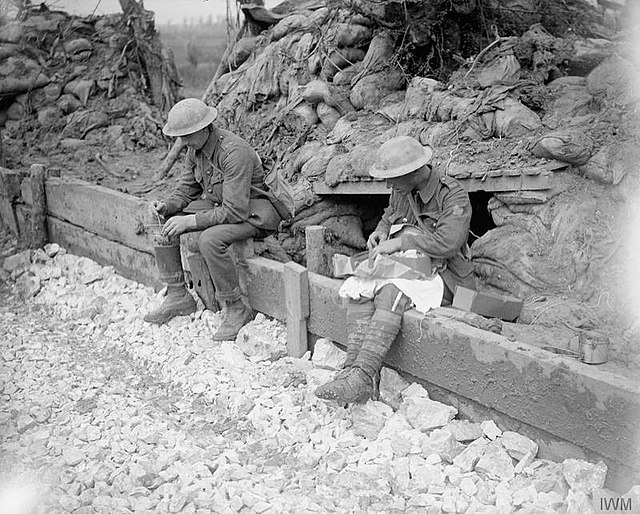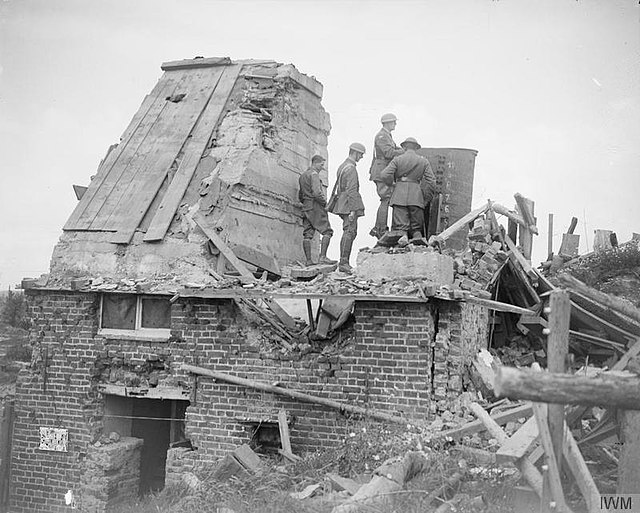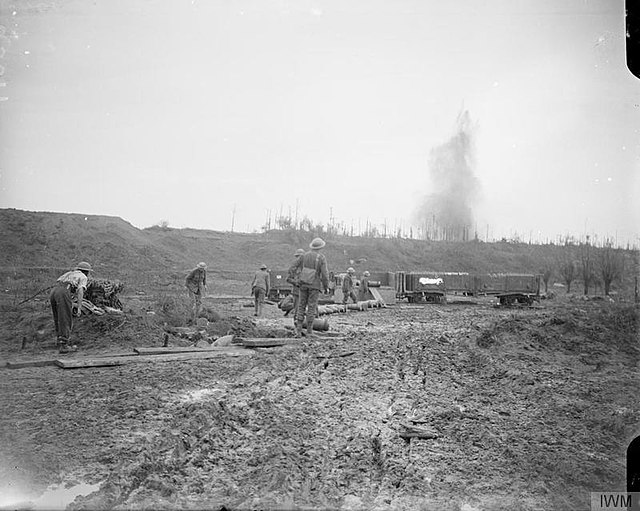Actions of St Eloi Craters
The Actions of St Eloi Craters from 27 March to 16 April 1916, were local operations in the Ypres Salient of Flanders, during the First World War by the German 4th Army and the British Second Army. Sint-Elooi is a village about 5 km (3.1 mi) south of Ypres in Belgium. The British dug six galleries under no man's land, placed large explosive charges under the German defences and blew them at 4:15 a.m. on 27 March. The 27th Division captured all but craters 4 and 5. The 46th Reserve Division counter-attacked but the British captured craters 4 and 5 on 30 March. The Canadian Corps took over, despite the disadvantage of relieving troops in action.
St Eloi
Western Front after the Second Battle of Ypres, 1915
An aerial view of St Eloi, photographed by 6 Squadron RFC, 19 March 1916.
Die "St. Eloi-Stellung" am 1. April 1916 (Fliegerphotographie). The craters of mines D2, D1, H4 and H1 are visible.
Sint-Elooi is a small village, about 5 km (3.1 mi) south of Ypres in the Flemish province of West Flanders in Belgium. The former municipality is now part of Ypres. Though Sint-Elooi is the Dutch and only official name, the village's French name, St. Eloi, is most commonly used in English due to its role in World War I. The village and the nearby locations of Voormezele and Hollebeke were merged into Zillebeke in 1970 and into Ypres in 1976.
Royal Garrison Artillery gunners outside a shelter at St Eloi, 11 August 1917
British officers in a captured German armoured observation post on a ruined house in St Eloi, 11 August 1917
St. Eloi, 11 August 1917. A shell is bursting in the background
Sappers at Work: A Canadian Tunnelling Company, Hill 60, St Eloi by David Bomberg








